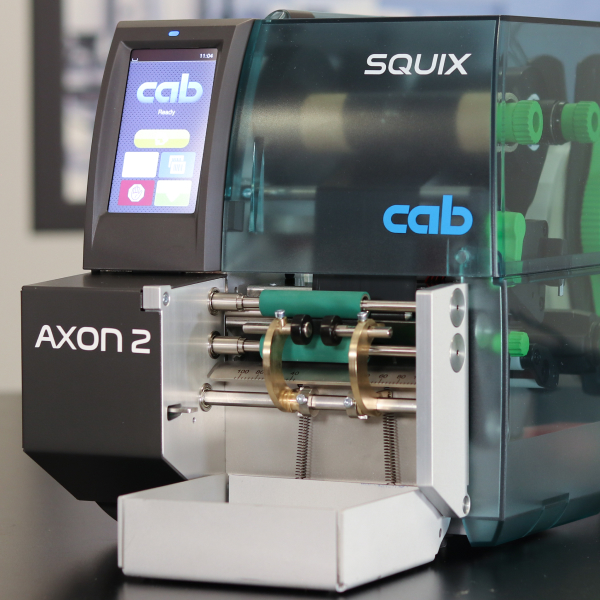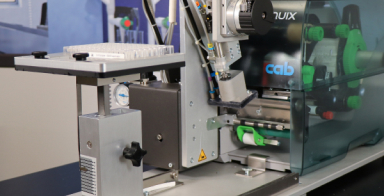Ensure your products remain clearly identified and traceable, even in the harshest cold storage environments. Our labels are engineered to withstand extreme temperatures, moisture, frost, and even liquid nitrogen without losing adhesion or readability. Labs, biobanks, and pharmaceutical companies can trust our solutions for their critical inventory.

Labeling for cold storage involves unique requirements that ensure the integrity and traceability of products. Extreme temperatures, moisture, frost, and repeated freeze-thaw cycles can all impact label performance. It’s essential to understand these factors to select the right labels and adhesives for cold storage applications.

To address cold storage labeling effectively, it is necessary to consider specific environmental stressors. Labels must resist not only low temperatures but also the physical stress of handling and storage conditions. Additionally, adhesives must maintain their bond and flexibility without becoming brittle.
Flash freezing involves rapidly cooling products to extremely low temperatures, often in liquid nitrogen or ultra-low temperature freezers. This rapid process presents a significant challenge for labeling, as the labels must withstand the sudden and drastic temperature drop without losing adhesion.
Labels designed for flash freezing are made with advanced adhesives that can bond instantly and maintain their flexibility and durability to prevent cracking or peeling during flash freezing.
While labels can be applied to frozen tubes, they cannot bond properly to frosted ones. Specialized adhesives are required to bond effectively to cold surfaces once they are frost-free.
Wrap-around labels offer a practical solution by adhering to themselves rather than the tube, ensuring secure attachment even in these challenging conditions. Properly preparing the tube surface and selecting the right labels are crucial steps to ensure your samples remain identifiable.
Freeze/thaw cycles, or thermal cycling, involve repeatedly freezing and thawing products, which can severely stress labels. This process can cause labels to crack, peel, or fall off if they are not designed to endure such conditions.
Labels for cold storage must be able to withstand these cycles without losing adhesion or legibility. High-performance adhesives and durable materials are essential to maintain label integrity through repeated exposure to fluctuating temperatures.
Application temperature is the range within which a label can be applied to a surface and the adhesive will bond properly. In contrast, the operating temperature is the range of temperatures that the label can withstand once applied. For instance, a label designed to endure temperatures as low as -80°C may require an application temperature of -20°C or higher to ensure proper adhesion.
If labels are applied outside their specified application temperature range, the adhesive may not bond effectively, leading to label failure. Ensuring labels are applied within their application temperature guarantees they will perform successfully and endure their promised operating temperatures, maintaining reliability and traceability in cold storage environments.

Choosing the right label material for extreme cold storage is crucial to maintaining the integrity and traceability of your samples. Our specialized label materials are designed to perform reliably in the harshest conditions, from ultra-low temperature freezers to vapor and liquid nitrogen storage. Below, you’ll find a detailed overview of our top-performing materials, each tailored to specific cold storage environments to ensure optimal adhesion, durability, and readability.

Choosing the right adhesive for cold storage labels is crucial, as it is often the most finicky and frustrating part of label construction. The adhesive is arguably the most important component in determining the success of cold storage labels. Rubber-based adhesives are known for their high initial tack, meaning they can quickly and effectively bond to surfaces, which is ideal for frost-prone environments.
On the other hand, acrylic-based adhesives are designed to withstand more extreme conditions and offer excellent chemical resistance. They may take slightly longer to achieve a full bond compared to rubber-based adhesives, but once set, they provide a durable and long-lasting adhesion. Understanding both the application environment and storage conditions is essential for a successful bond.

Our go-to material for ultra-low temperature storage is a white high gloss polypropylene paired with a permanent rubber adhesive. This durable material resists edge tears, making it perfect for plastic laboratory vials.
We’ve validated its performance down to -80°C, and it consistently excels in these extreme conditions. You can apply this label within a temperature range of 20-80°F, ensuring reliable adhesion and readability in ultra-low temperatures.

For vapor nitrogen storage, we recommend a white matte polyethylene with a permanent rubber adhesive. This material is engineered for exceptional ultimate adhesion, ensuring labels stay firmly in place even under the harshest conditions.
We have tested this label down to vapor phase liquid nitrogen (-150°C) and dry ice exposure, and it performs reliably in extreme temperatures. You can apply this label material at 0°F (-17°C) as long as the surface is dry and frost-free.

Our choice for liquid nitrogen storage is a wrap-around label material featuring a top-coated polypropylene face stock with a permanent acrylic adhesive. This material offers excellent clarity, ink adhesion, and moisture resistance.
Fully wrapped around a tube or vial, it withstands liquid nitrogen temperatures without compromising performance. Apply it at temperatures as low as -23°F for reliable adhesion and legibility in extreme environments.

Adding laminate protection to cold storage labels enhances their durability and resistance to harsh conditions. Labels can feature a laminate top coat or self-laminating options like our FLAP (Flexible Lamination After Printing) labels for microscope slides and wrap-around labels for cryovials. In these cases, the lab technician folds over or wraps the laminate around the printed section of the label,
providing an additional layer of protection. This process not only shields the printed information from environmental stressors but also prevents smudging and fading. Laminates will significantly increase the label’s resistance to temperature, chemicals, and abrasion, ensuring that the printed information remains legible and intact throughout its storage life.
Discover the efficiency and precision of our Labware Prep™ Services tailored specifically for tubes and vials. Our comprehensive service includes pre-barcoding, pre-marking, and custom labeling to meet your unique needs. By eliminating common frustrations associated with cold storage labeling, we help you maintain the integrity of your samples and streamline your workflow.
Automating the labeling process in cold storage environments requires labels specifically engineered to perform under both automated application and extreme conditions. Cold storage labels must not only withstand low temperatures but also function seamlessly with automated applicators. This dual requirement makes the design and engineering of these labels particularly challenging.

Applying cold storage labels correctly is essential for ensuring their performance and durability. Following best practices helps prevent common issues like peeling, smudging, and loss of adhesion. Here are some key tips to ensure your labels remain secure and legible in cold storage environments:
For labs that prefer to label their own vials, it’s crucial to use the right labels, printers, and applicators to ensure precision and compatibility with chromatography equipment. Proper barcode placement is essential for seamless integration into automated systems and accurate sample tracking. Choose high-quality materials that can withstand the chemical and environmental conditions of chromatography processes.
High-quality label printing ensures that all essential information is accurately conveyed on every sample. By using durable materials and advanced inks your labels remain legible and intact. Custom printing allows you to include barcodes, color-coding, and detailed text.
Streamlining label application with automatic tube and plate labelers enhances efficiency and accuracy in your lab. Automated labelers reduce the risk of human error, ensuring that each label is applied precisely and consistently, regardless of sample volume.


The Axon 1 applicator is designed for high-speed, precise vertical labeling of tubes in cold storage environments. Our labels for the Axon 1 are engineered to maintain adhesion and legibility, ensuring each label is applied accurately and consistently, even in ultra-low temperatures.

For more complex labeling tasks, the Axon 2 offers advanced capabilities for horizontal labeling of tubes. Our cold storage labels for the Axon 2 are developed to handle its sophisticated application processes while maintaining durability and readability in extreme temperatures.

The SQUIX printer with the S3200 applicator is specifically designed for labeling microplates with precision and flexibility. Our labels compatible with the Squix S3200 are crafted to ensure they adhere properly and remain legible, even in the harsh conditions of cold storage.
Ready to optimize your labeling solutions for cold storage? Fill out the form below, and our team will help you find the right fit for your lab.

Blood labels ensure accurate tracking of blood samples. They withstand cold storage and handling in critical environments.

Cryo labels remain durable in extreme cold conditions. Ideal for long-term storage of samples at ultra-low temperatures.

PCR labels provide clear identification for small tubes used in thermal cycling. They are designed to withstand the high temperatures of PCR processes.












© Computype 2024
© Computype 2024
"*" indicates required fields